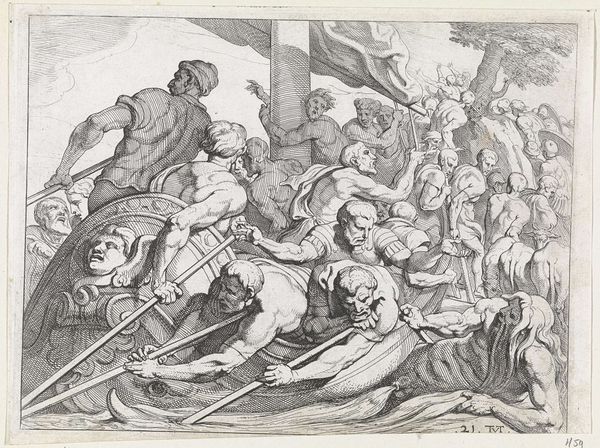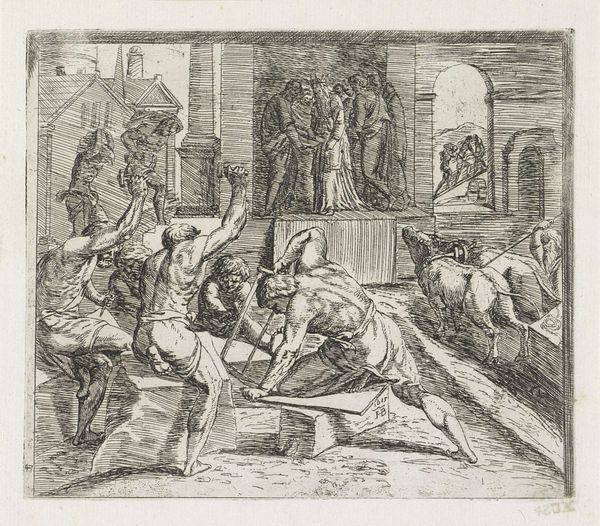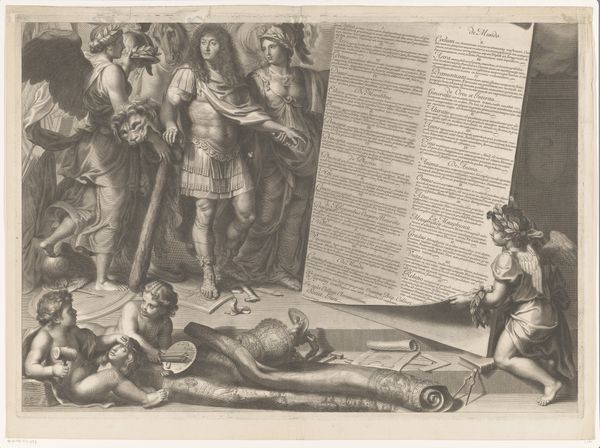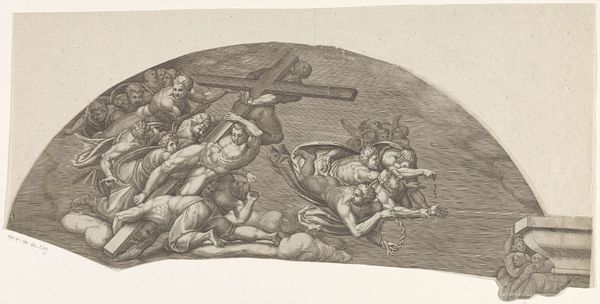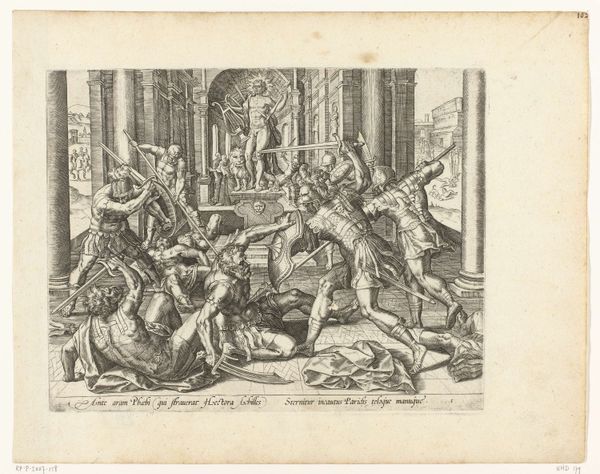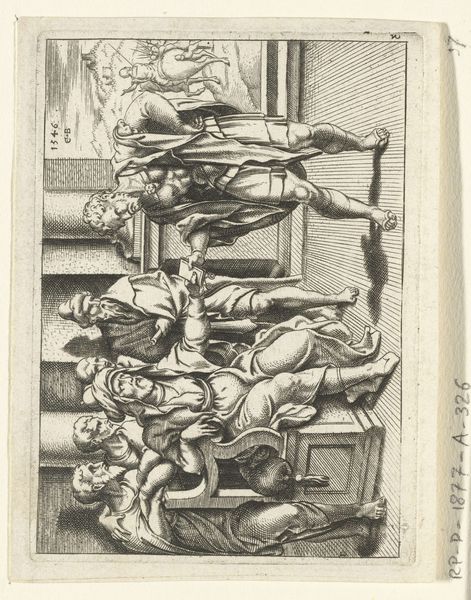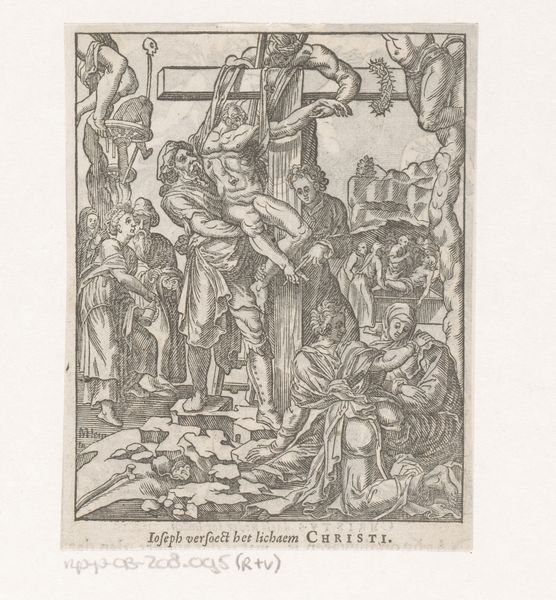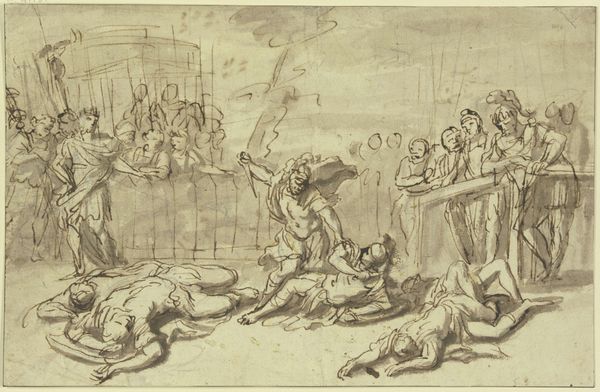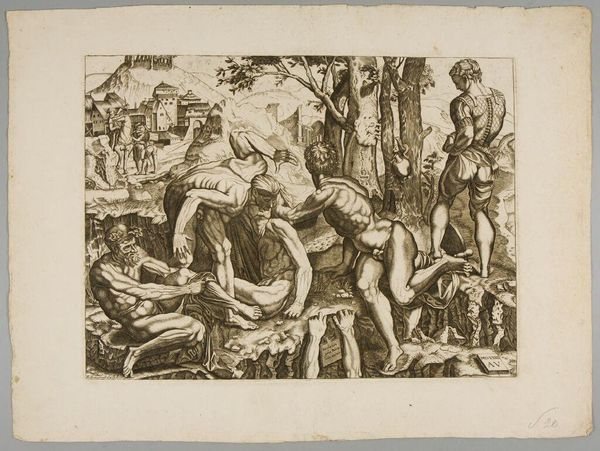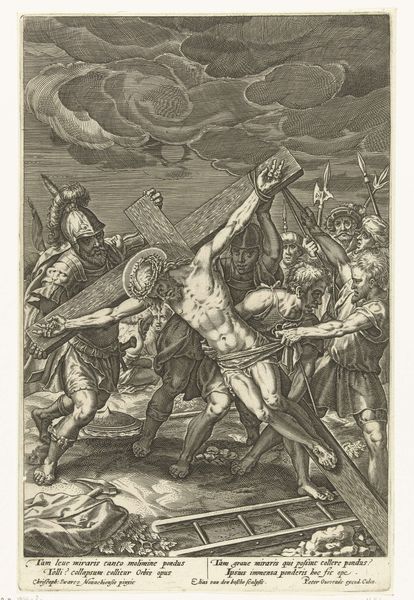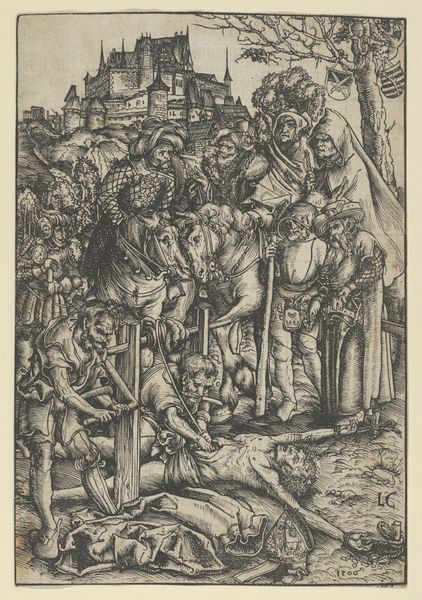
print, engraving
#
narrative-art
#
baroque
# print
#
figuration
#
form
#
line
#
history-painting
#
engraving
Dimensions: height 133 mm, width 76 mm
Copyright: Rijks Museum: Open Domain
Curator: Here we have "Christus aan het kruis en dobbelende soldaten," or "Christ on the Cross and Soldiers Dicing", an engraving rendered between 1590 and 1622 by Boëtius Adamsz. Bolswert. Editor: It's brutally stark, isn’t it? The sharp lines create a sense of violence and chaotic movement, perfectly capturing the moment’s raw energy and callousness. Curator: Indeed. The engraving process itself, etching away at the metal plate, mirrors the slow, torturous nature of the depicted event. Bolswert's choices of materials is key. The dissemination of the printed image to a wider public via engraving would influence public understanding of this very loaded scene. Editor: Absolutely. Consider how the arrangement itself amplifies the scene’s symbolic power. The central positioning of Christ immediately signifies his divine status, but the mundane acts of the soldiers gambling below injects an almost unbearable sense of profane indifference. The soldiers represent chaos but Christ’s form and centrality imposes order. Curator: The visual contrast emphasizes this duality perfectly. Note how Bolswert depicts the soldiers – their garments are highly textured and detailed and rendered differently from the smooth form of Christ. Editor: Precisely, and that text on the left! That inclusion of textual explanation alongside the scene provides another layer of interpretation. The repetition of Christ and those around him across the cross design carries its weight on cultural memory. Curator: Yes, the printing allows multiple viewpoints. And the inscription below it, that's interesting for social interpretation and context for its distribution to a specific contemporary audience. It served, obviously, to guide them through the piece's narrative and the religious context it exists in. The narrative in the first part mentions Christ’s title. Editor: And in the final part, there's something profoundly unsettling about the way "Illudunt morituro" evokes laughter aimed at one who is dying. It creates a sense of immediate tension with the first segment of the annotation of the artwork and with Christ’s “title,”. Curator: Understanding this engraving hinges on considering the artist’s craft and technique. This technique aided Bolswert in efficiently spreading his perspective in 16th-17th century Europe. Editor: This artwork gives powerful consideration for symbols of suffering, salvation, but also it evokes more widely, an immediate, brutal human response. The emotional, psychological impact of Bolswert’s image resonates far beyond its historical moment. Curator: Thank you for helping unpack that fascinating tension. The artist is successful in this engraving to emphasize how this important episode from religious history, as it can come alive in many perspectives.
Comments
No comments
Be the first to comment and join the conversation on the ultimate creative platform.
